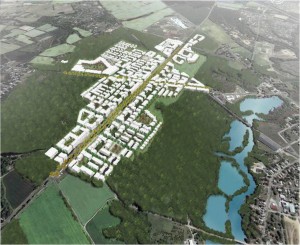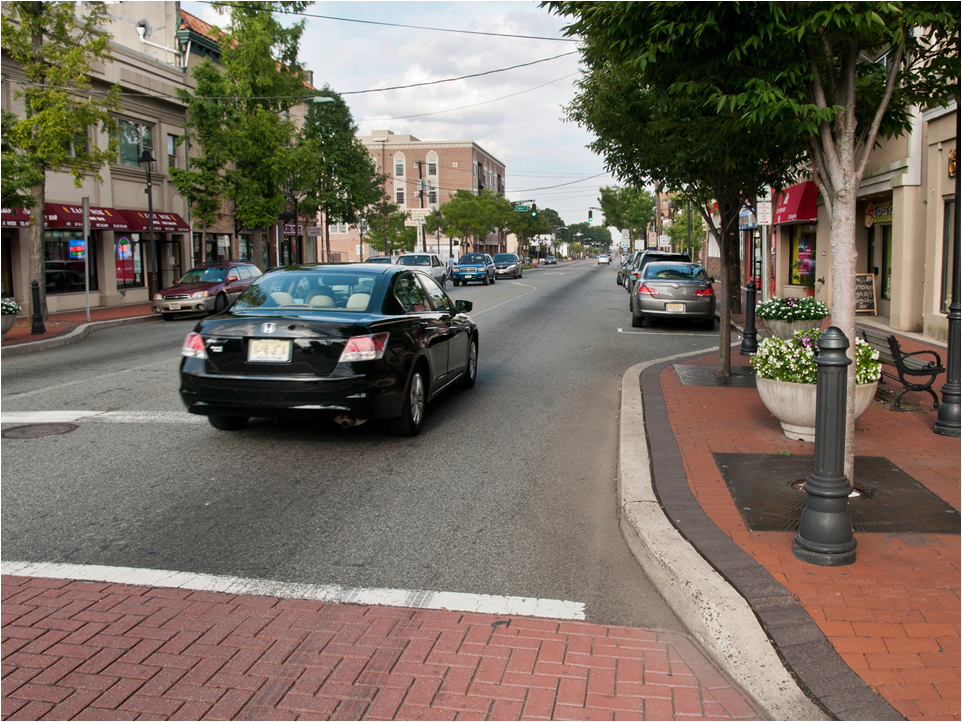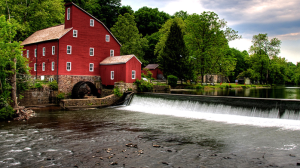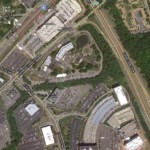New Jersey Future Blog
Planning for Sea-Level Rise II: Redirecting Development
January 10th, 2017 by New Jersey Future staff
This series of articles was written by New Jersey Future intern Connor Montferrat.
This is the second of a series of posts that will examine strategies being used in states throughout the country to reshape development patterns in response to risks posed by rising sea levels and a changing climate. The objective of the series is to present practical and tested adaptation and mitigation approaches that New Jersey communities might use to help respond to the growing threat presented by our subsiding and eroding coastlines, increasingly frequent and severe storms, and mounting flood risks.
This article considers four methods to redirect development out of areas at risk that involve compensating property owners. The first two tools involve private transactions to finance the acquisitions, while the second two depend upon public funding.
- Transfer of development rights (TDR) programs are typically used to shift growth away from environmentally sensitive areas or farmland to areas more suited for development. They work by establishing formal “sending” and “receiving” districts, allowing for density bonuses for development in the receiving areas in exchange for land permanently preserved in the sending districts. The New Jersey Pinelands has one of the most established and successful TDR programs in the country and in 2004 the Legislature authorized the tool’s use in municipalities statewide. Implementation has been limited due to its complicated nature; however, it would be worth exploring how to use TDR as an effective way to redirect development that would otherwise occur in areas of risk to areas that are better suited to accommodate it.
- Non-contiguous clustering, similar to TDR, is a tool to preserve farmland and open space under which a set of non-adjacent parcels is developed, with one or more parcels accepting increased density and the other(s) being preserved. Non-contiguous clustering has fewer requirements than TDR, most notably because it is simpler and smaller-scale; in addition it does not require plan endorsement from the State Planning Commission. Of interest is a 2013 update to the Legislation that allows for (but does not require) the designation of formal areas for growth and for preservation, giving municipalities more control over where the development occurs. This tool could be used effectively to reduce new development in flood-prone areas.
- Targeted buyouts are a tool used by governmental agencies to acquire at-risk properties. Typically, the occupying structure is demolished and the property is retained in perpetuity as open space. Incentives to encourage property owners to relocate include fair-market-value compensation, bonus payments, or temporary property-tax reduction. This strategy is currently in use in New Jersey, where flood-prone properties are acquired under the Blue Acres Program.
- Life rights, also known as life estates, grant current owners the right to live in a home for the duration of the owner’s life or tenure. Once that owner no longer inhabits the property it cannot be resold or reused. In exchange, the owner is paid a fair market value for the property at the time the life rights agreement is executed. Currently, this technique is used by Monmouth County Conservation Foundation to acquire and preserve open space, but a life-rights program could be used effectively in areas at risk.
What Other States Are Doing
For the purpose of prioritizing infrastructure funding and adaptation planning, Florida has established Adaptation Action Areas (AAAs), which are low-lying coastal zones that are experiencing coastal flooding due to extreme high tides and storm surge and are vulnerable to the impacts of rising sea levels. Once a local government adopts an AAA, it may consider policies within the Coastal Management Element of its Comprehensive Plan to improve resilience to coastal flooding. Florida’s Planning Guidebook for local governments notes that a coastal community could establish a voluntary Adaptation Action Area TDR program to provide incentives to landowners to direct development away from the coastal, high-risk areas in order to develop at higher densities in environmentally non-sensitive and low-risk areas upland areas. The state’s Planning Guidebook points to Monroe County, the cities of Palmetto and Tallahassee where TDR has been used successfully to protect environmentally sensitive areas. Other notable Florida examples of TDR include:
- The City of Satellite Beach encourages the use of TDR and resiliency in its comprehensive plan. Development and redevelopment is only permitted if it protects “life and property from the effects of coastal erosion, flooding, sea level rise, or damage to environmental systems.”
- Lee County, home to Cape Coral and Fort Meyers, has a TDR program in place to encourage property owners to move development off Pine Island to develop in denser urban areas of the county.
- Collier County has a TDR program that helps protect the Big Cypress National Preserve. The County also has a TDR program that focuses on densely developed coastal areas. When property owners sell development rights in the sending area, they either place a conservation easement on the property to ensure that the land will remain undeveloped or deed the land to the county for coastal management.
Implementation in New Jersey
The most successful TDR example outside of the Pinelands in New Jersey is in Chesterfield (Burlington County). Chesterfield has preserved more than 7,000 acreshrough TDR. Woolwich Township (Glouster County) also has an approved TDR program; however implementation has been limited in part due to regulatory hurdles around wastewater infrastructure as well as a slowdown in the real estate market. This is one of the limitations of establishing a transfer of development rights program – the comprehensive planning required takes time and during that time market forces can shift, making implementation of the plan difficult.
Of note is Middletown Township’s 2014 master plan reexamination report, which indicates that as a result of the impacts of hurricanes Irene and Sandy the municipality would consider tools to lower density, limit development, and use TDR in areas where significant environmental constraints exist, especially near McClees Creek and Navesink River.
Examples of coastal noncontiguous programs include Middle Township (Cape May County) and Ocean Township (Monmouth County). Ocean Township’s Waretown Town Center Redevelopment Plan uses a form of noncontiguous clustering to transfer impervious cover from one parcel to another, where development is more suitable.
Since 2013, 719 homes in 10 municipalities in six counties have been approved for buyouts through New Jersey’s Blue Acres Program. However, except for Lawrence Township in Cumberland County, the program has mostly focused buyout activity inland in Middlesex, Somerset, Union, and Passaic counties where there is municipal support for the program, rather than on the coast.
Conclusion
New Jersey communities already have TDR and non-contiguous programs at their disposal. These programs could be used to help reshape coastal land use patterns to minimize or avoid current and future flood inundation impacts; although few if any communities have yet to use these programs for this explicit purpose. It should also be noted that these programs can be complicated to design and implement, and may take a good deal of ongoing analysis and management to be successful. To be successful, towns will need resources and technical assistance.

















